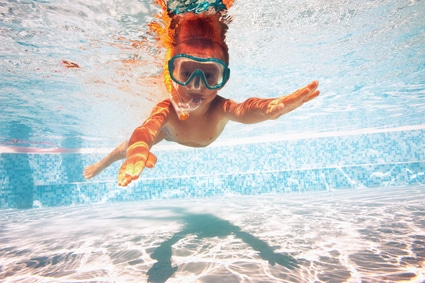- Free Consultation: 866-966-5240 Tap Here To Call Us
Swimming Pool Drowning Accidents in California

California Swimming Pool Accidents
Swimming pool drowning accidents in California are some of the most tragic yet preventable catastrophes that can befall a family, especially one with young children. This post is meant to shed light on the extent of the dangers and provide some guidelines on how such tragedies can be prevented.
Statistics on California Swimming Pool Injuries and Fatalities
- Drowning is the leading cause of death in and around the home for children under the age of 5 in the Golden State.
- Seventy Five percent of children involved in submersion deaths were between the ages of 1 and 3 years old.
- Boys are more likely than girls to be the victim of a drowning in a home pool or spa.
- Most victims of fatal water accidents were being “supervised” by one or more parents at the time of the incident.
- Nearly 70% of the child drowning victims were seen in the house, yard or patio just prior to the fatal event.
- 65 % of victims were swimming in residential pools owned by the victim’s immediate family and 33% were pool owners that were friends or extended relatives of the victim.
- 77% of pool fatalities were found submerged within 5 minutes of going under the water.
- Only 2 percent of kids injured or killed were found to be trespassing on the property of another person.
What do these stats tell us? They demonstrate loud and clear that the majority of pool drownings affect young children and toddlers and that, without constant vigilance by parents and relatives including the homeowners where the swimming pool is located, tragedy can strike in an instant. Contrary to popular belief, most children do not flail or splash wildly prior to going under water to alarm the adults or older children. In the lucky cases, the submerged child may be found in time to do CPR and revive them but, they sometimes still suffer brain damage as a result of the lack of oxygen for any, significant period. In other instances, the result is simply a silent death.
Prevention of Child Drownings Through Proper Barriers to Entry and Adequate Supervision
According to the Consumer Products Safety Commission, the two main ways that tragic pool accidents can be prevented are through proper safety barriers and quality adult supervision of minors in and around the swimming area. According to the CPSC guidelines, pool barriers should have all of the following characteristics:
- They should be at least 48 inches from the ground to the top to prevent a child from climbing over and getting into the pool.
- For solid barriers like brick and mortar or wood fences, there should be no indentations or protrusions other than normal construction components like masonry joints.
- Spacing between the vertical pieces of any wooden or metal fencing should be no more than 1 and 3/4 inches between each slat or rung.
- For chain link fences, the mesh size should not exceed 1 and 1/4 inches square in the spaces between the meshing unless it is a portion of the fencing that is attached to the top or bottom of the rails.
- For fences made up of latticework, the spaces should not exceed 1 and 3/4 inches between that lattices.
- To prevent children from crawling under the barrier, the space between the bottom rail and the ground should not exceed 4 inches.
- Above Ground Pools create their own barrier to entry but, should be supplemented with railing running along the top of the pool edge as well as an entry area in front of the steps that is gated and latched.
- Gates : Pedestrian gates for entry and exit should be self-latching and the latch should be at least 54 inches from the bottom of the gate to prevent young children from reaching up and opening the entrance way.
- Sliding glass or other doors where people can enter the pool area from within the house should be equipped with an alarm that sounds within 7 seconds of the door being opened and continues to beep for 30 seconds thereafter. This alarm should be in operation whenever young children are present in the home.
All of these same guidelines should be followed for any type of indoor or outdoor water feature including spas and hot tubs. Many hot tubs will also have locking covers that can be placed upon the top when the jacuzzi is not in use but, this is no substitute for a fence or other barrier when the tub is in use.
In addition to the above precautions related to pool fences and other impediments to entry, there is no substitute for constant adult supervision in and around pools and spas. Parents should keep a continual eye out for young kids, toddlers and infants. With large events such as birthday pool parties, it is always advise able for the homeowner to retain the services of a certified lifeguard to monitor the pool activities for the duration of the event.
Sources:
U.S. Consumer Product Safety Commission, Safety Barrier Guidelines for Home Pools












